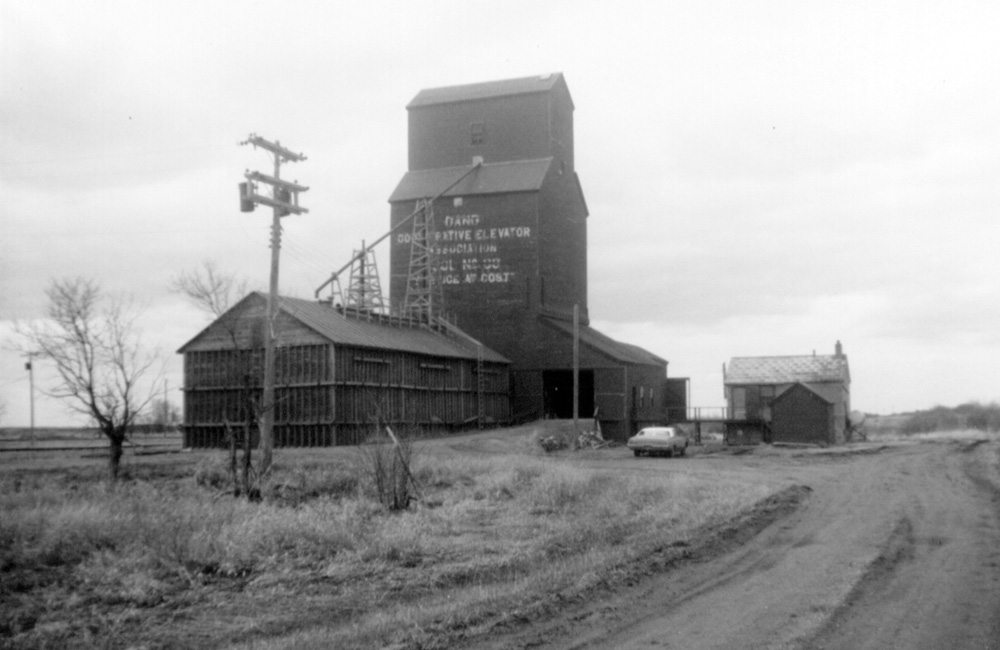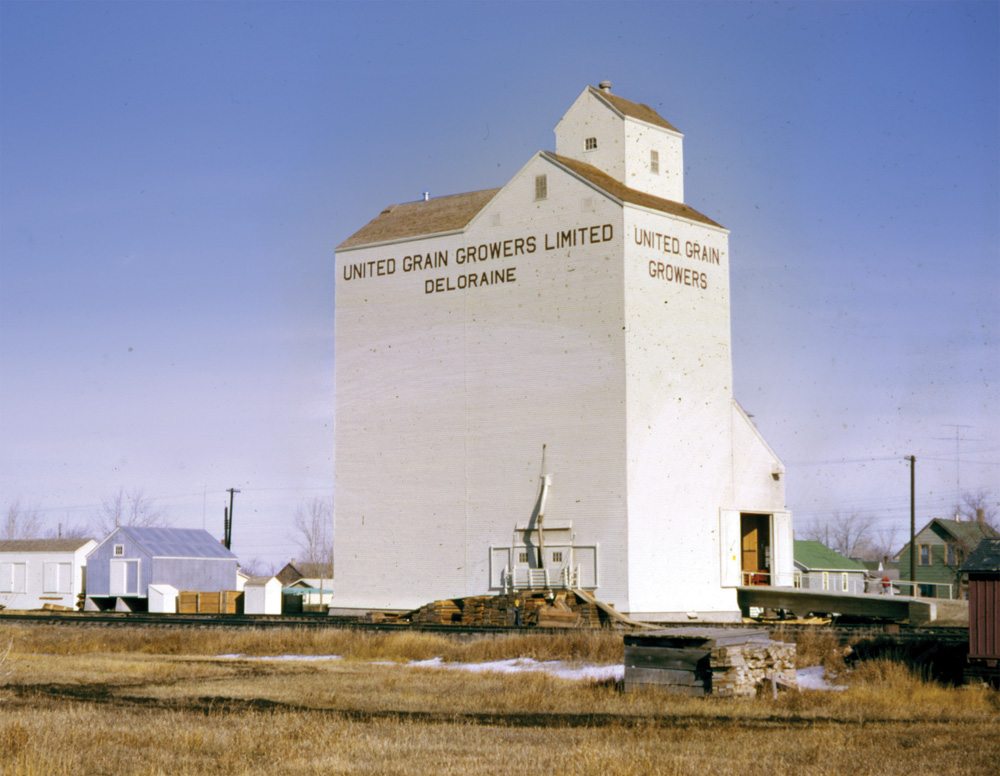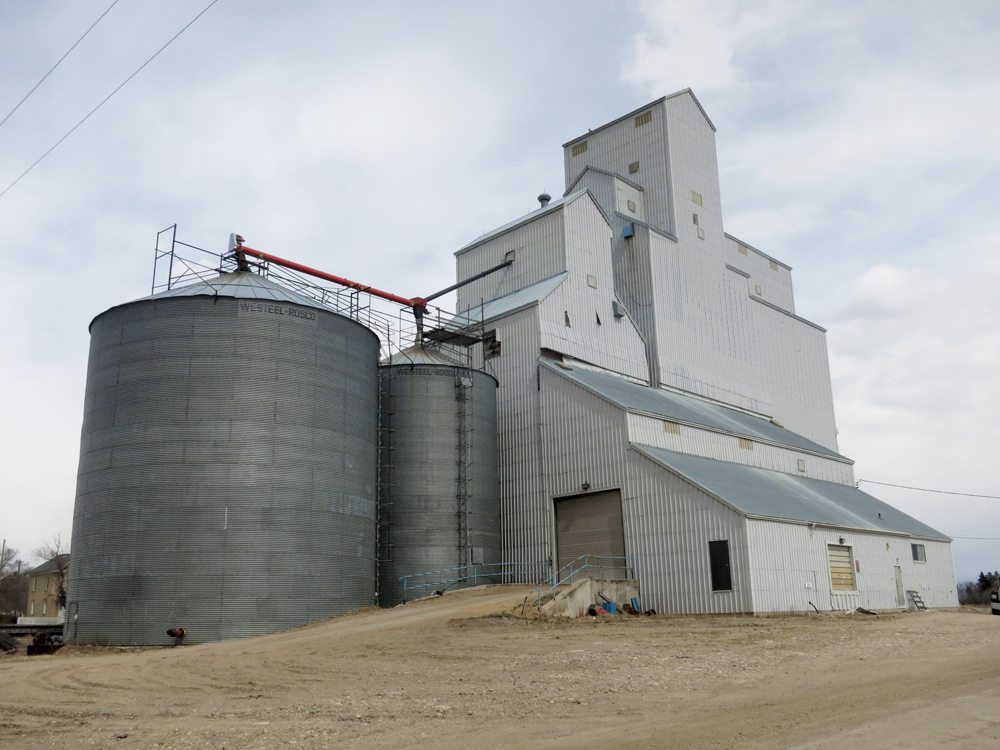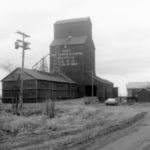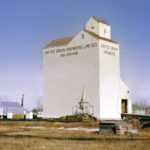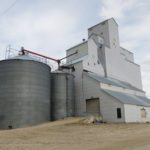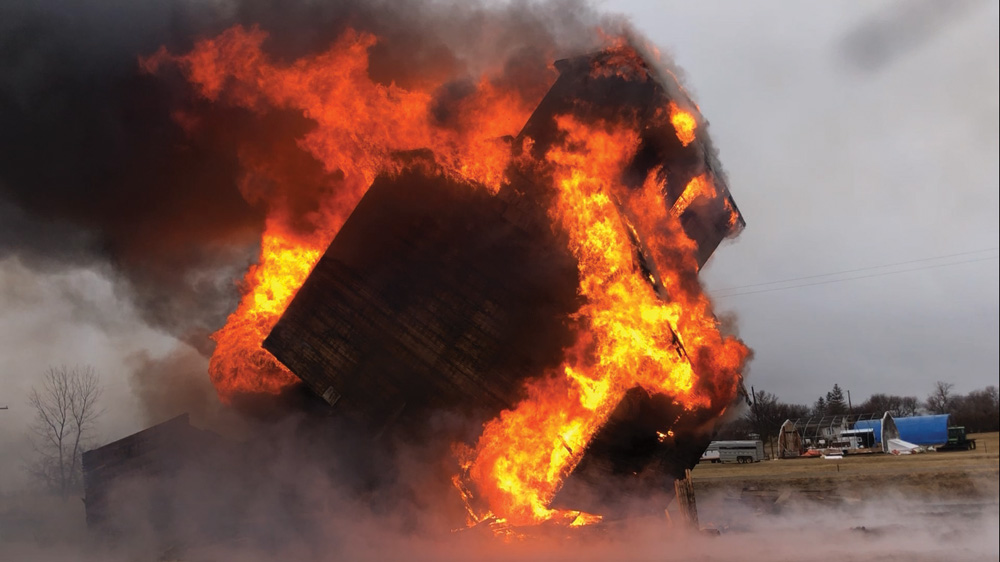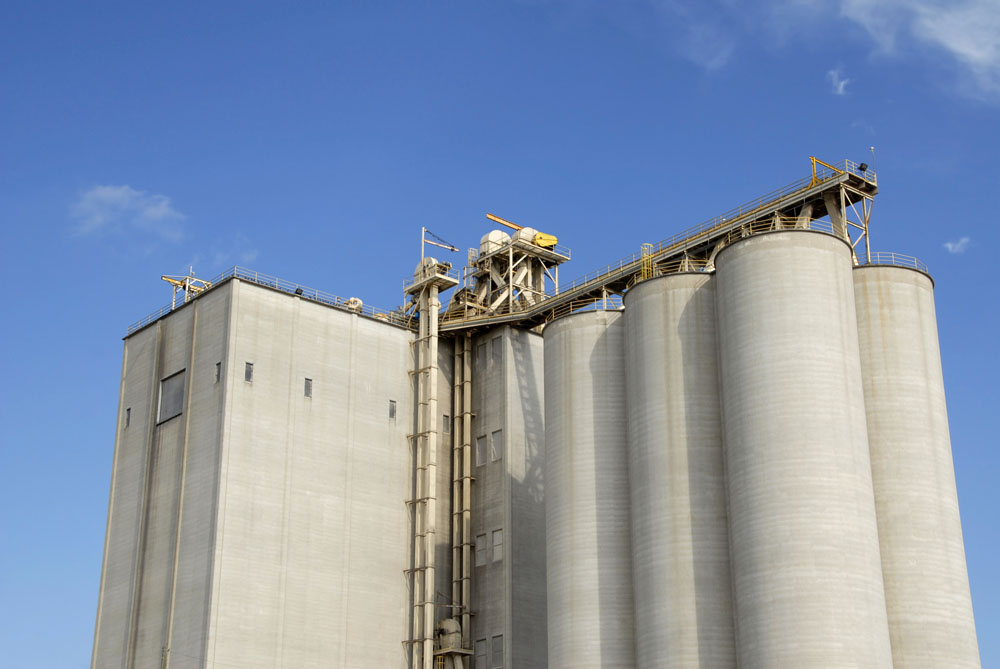
A 36,000-bushel elevator at Bellsite, 36 miles north of Swan River in the Rural Municipality of Mountain, was built in 1951 by Manitoba Pool Elevators and sold to United Grain Growers in March 1960. Seen in this photo from 1964, it was operated for a few years on a part-time basis, along with the elevator at nearby Novra, but increasing costs and low grain throughput led to its closure in November 1975. The elevator was used for private grain storage until September 16, 2007 when, nearly filled with grain, it was destroyed by fire.
Photo: University of Manitoba Archives & Special Collections
The railway siding of Dand, about 10 miles north of Deloraine, was established in 1913 after the CPR laid tracks in the area. The first grain elevator was built later that year by the Dominion Elevator Company. It was sold to the Canadian Consolidated Grain Company in 1928, the same year that Manitoba Pool built a 40,000-bushel elevator nearby. In addition to two grain elevators, at its height Dand consisted of a train station, general store, garage, church, school and teacherage, and a handful of houses. A 30,000-bushel balloon annex, visible in this photo from the 1970s, was built beside the Pool elevator in 1940. The Consolidated elevator was destroyed by fire in fall 1950. The Pool elevator closed in December 1974 and was later demolished. Today, a lonely church still stands at Dand.
Photo: University of Manitoba Archives & Special Collections
United Grain Growers built its first elevator at Deloraine in 1960, on the site of a former flour mill and power plant. The unusual-looking design was one of the earliest examples of “composite style” in which the elevator and annex were combined as a single, solid crib. The capacity when it opened on December 12, 1960 was 105,000 bushels but it was expanded with a 100,000-bushel crib annex in June 1976. Operation was taken over by Agricore United (now Viterra) in 2001 but it was closed in 2006 and demolished in mid-2010. The company’s other elevator, built west of town in 1973-74, was closed in 2002 and is now in private hands.
Photo: University of Manitoba Archives & Special Collections
The oldest portion of this facility at Newdale, shown here in early 2017 between two steel bins and a larger elevator, was constructed by United Grain Growers in 1925. During the Second World War, in 1940 and 1941, two annexes were built beside it. One of the annexes was demolished in 1945 and the other was used until 1962. A third annex, constructed with the elevator in 1925, was removed in 1976. A thorough renovation occurred in 1966 and the steel bins (one with a capacity of 40,000 bushels and the other of 17,000 bushels) were erected on its west side in 1974. The larger elevator on the east side, with a capacity of 85,000 bushels, was built in 1983. Closed on July 31, 2000, the facility was sold to private ownership. The smaller elevator's foundation is cracked and, although its pit and leg are intact, it is no longer in use.
Photo: Gordon Goldsborough
In the 1950s, there were over 700 grain elevators in Manitoba. Today, there are fewer than 200. You can help to preserve the legacy of these disappearing “Prairie sentinels.”
The Manitoba Historical Society (MHS) is gathering information about all elevators that ever stood in Manitoba, regardless of their present status. Collaborating with the Manitoba Co-operator it is supplying these images of a grain elevator each week in hopes readers will be able to tell the society more about it, or any other elevator they know of.
MHS Gordon Goldsborough webmaster and Journal editor has developed a website to post your replies to a series of questions about elevators. The MHS is interested in all grain elevators that have served the farm community.
Read Also

Do the math on replacement heifers
Beef farmers should know what it costs them to raise a replacement heifer and, based on that, decide the best replacement strategy to grow both their herd and their profits.
Your contributions will help gather historical information such as present status of elevators, names of companies, owners and agents, rail lines, year elevators were built — and dates when they were torn down (if applicable).
There is room on the website to post personal recollections and stories related to grain elevators. The MHS presently also has only a partial list of all elevators that have been demolished. You can help by updating that list if you know of one not included on that list.
Your contributions are greatly appreciated and will help the MHS develop a comprehensive, searchable database to preserve the farm community’s collective knowledge of what was once a vast network of grain elevators across Manitoba.
Please contribute to This Old Grain Elevator website here.
You will receive a response, by email or phone call, confirming that your submission was received.
Goldsborough is interested in hearing all sorts of experiences about the elevators — funny, sad, or anything in between. Readers willing to share their stories can leave messages at 204-474-7469.





